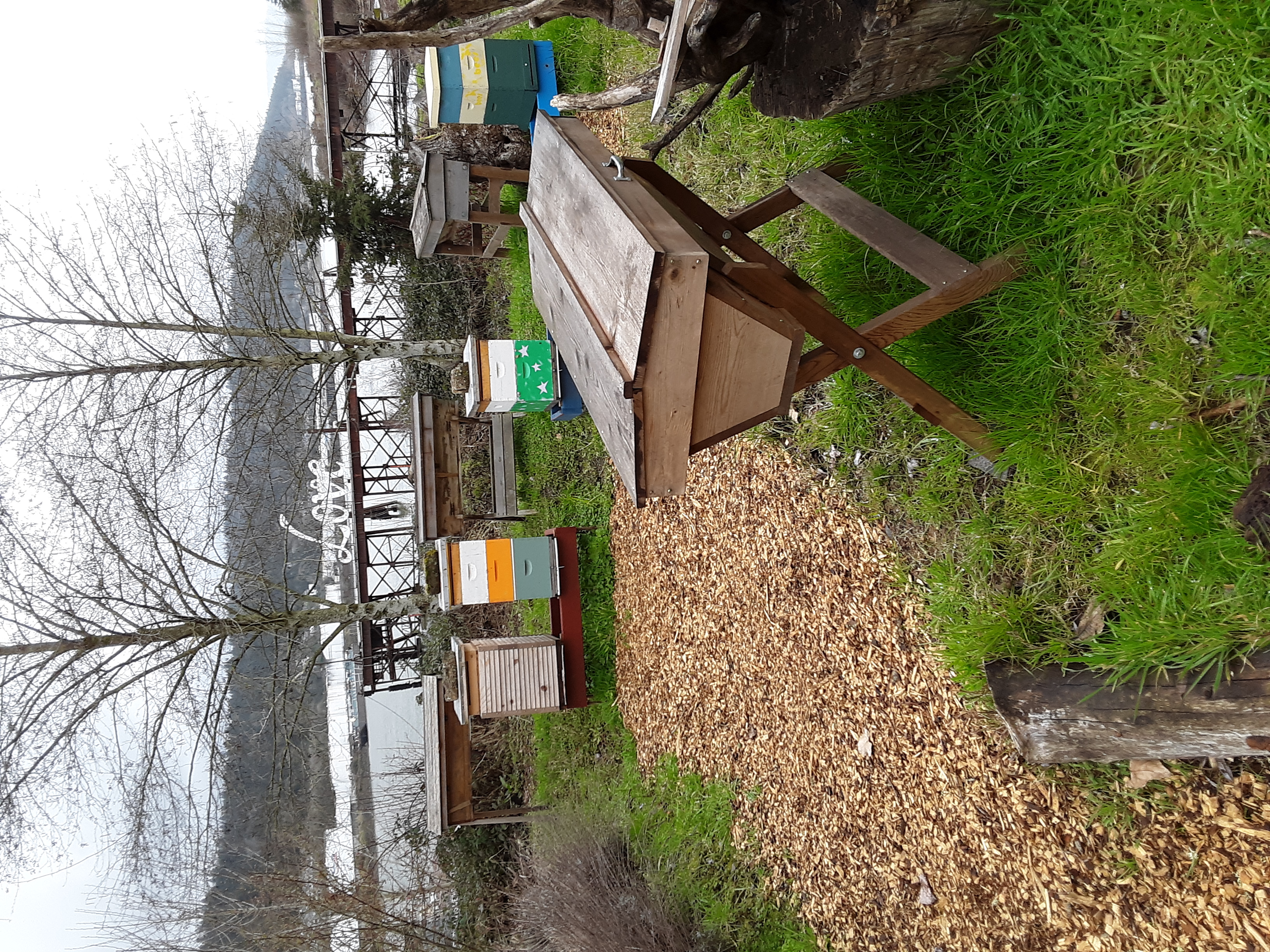Excessive, exaggerated stinging response that is repeated; many bees attempting to sting when colony is opened; bees following and continuing to attempt to sting beekeeper exiting from apiaryapiary:
a place where beehives and beekeeping equipment are located; also called a bee yard. An out-apiary is a site away from the owner’s residence. site once colony inspection finished; bees stinging as humans or other animals approach apiaryapiary:
site once colony inspection finished; bees stinging as humans or other animals approach apiaryapiary:
a place where beehives and beekeeping equipment are located; also called a bee yard. An out-apiary is a site away from the owner’s residence. .
.
Defensive colonies excessively sting relative to others that do not. An exaggerated response with repeated attempts to sting beekeeper or others in or around the apiaryapiary:
a place where beehives and beekeeping equipment are located; also called a bee yard. An out-apiary is a site away from the owner’s residence. . The defensive bees may fly out of a hive in large numbers when the hive is opened. They may pursue the beekeeper for some minutes and distance from the colony once the inspection is finished, or bees may begin stinging when a person or animal merely enters an apiaryapiary:
. The defensive bees may fly out of a hive in large numbers when the hive is opened. They may pursue the beekeeper for some minutes and distance from the colony once the inspection is finished, or bees may begin stinging when a person or animal merely enters an apiaryapiary:
a place where beehives and beekeeping equipment are located; also called a bee yard. An out-apiary is a site away from the owner’s residence. site.
site.
Heightened colony defense can be a response to weather conditions, colony size, queenlessness, previous colony disturbances (such as nightly visits from skunks), or human vandalism. Additionally, defensive colonies may be a particular strain or race of bees such as Africanized honey bees.
Colonies showing regular (not merely one time) heightened signs of defensiveness can be requeenedrequeen:
to replace a queen; old queens are often removed and replaced by a ripe queen cell or by a mated queen via an introduction cage
with gentler stock. This can be a difficult management effort, as the existing queen needs to be located, killed, and a new queen introduced.
Highly defensive colonies need to be euthanized. Soapy water poured into the colony from the top after dark (when foragers have returned) will eliminate the adult bees. Brood frames can be burned, since using them in other colonies may spread the defensiveness. Empty or honey-filled frames and hive parts can be rinsed with fresh water and given to strong colonies to clean up.
Africanized honey bees; opening colony under less than desirable environmental conditions; skunk or other continuing disturbance to colony
CAMBP. 2021. Defensive Honey Bees. California Master Beekeeping Program. Accessed 2023. https://cambp.ucdavis.edu/defensive-honey-bees
Caron DM. 2021. Handling Defensive Bees. American Bee Journal 161(4): 421-424. https://bluetoad.com/publication/?i=699449&p=73&view=issueViewer and https://bluetoad.com/publication/?m=5417&i=699449&view=articleBrowser&article_id=3970774&ver=html5
Tarpy D. 2016. The Different Types of Honey Bees. NC State Extension. Accessed 2023. https://content.ces.ncsu.edu/the-different-types-of-honey-bees
Burke KL. 2020. Why Gentle Honeybee Hives Are Less Resilient. American Scientist. Accessed 2023. https://www.americanscientist.org/article/why-gentle-honeybee-hives-are-less-resilient
MAAREC. n.d. Selecting the right type of bee. Mid-Atlantic Apicultureapiculture:
the science and art of cultivating bees to benefit humans
Research and Extension Consortium. Accessed 2023. https://canr.udel.edu/maarec/selecting-the-right-type-of-bee/